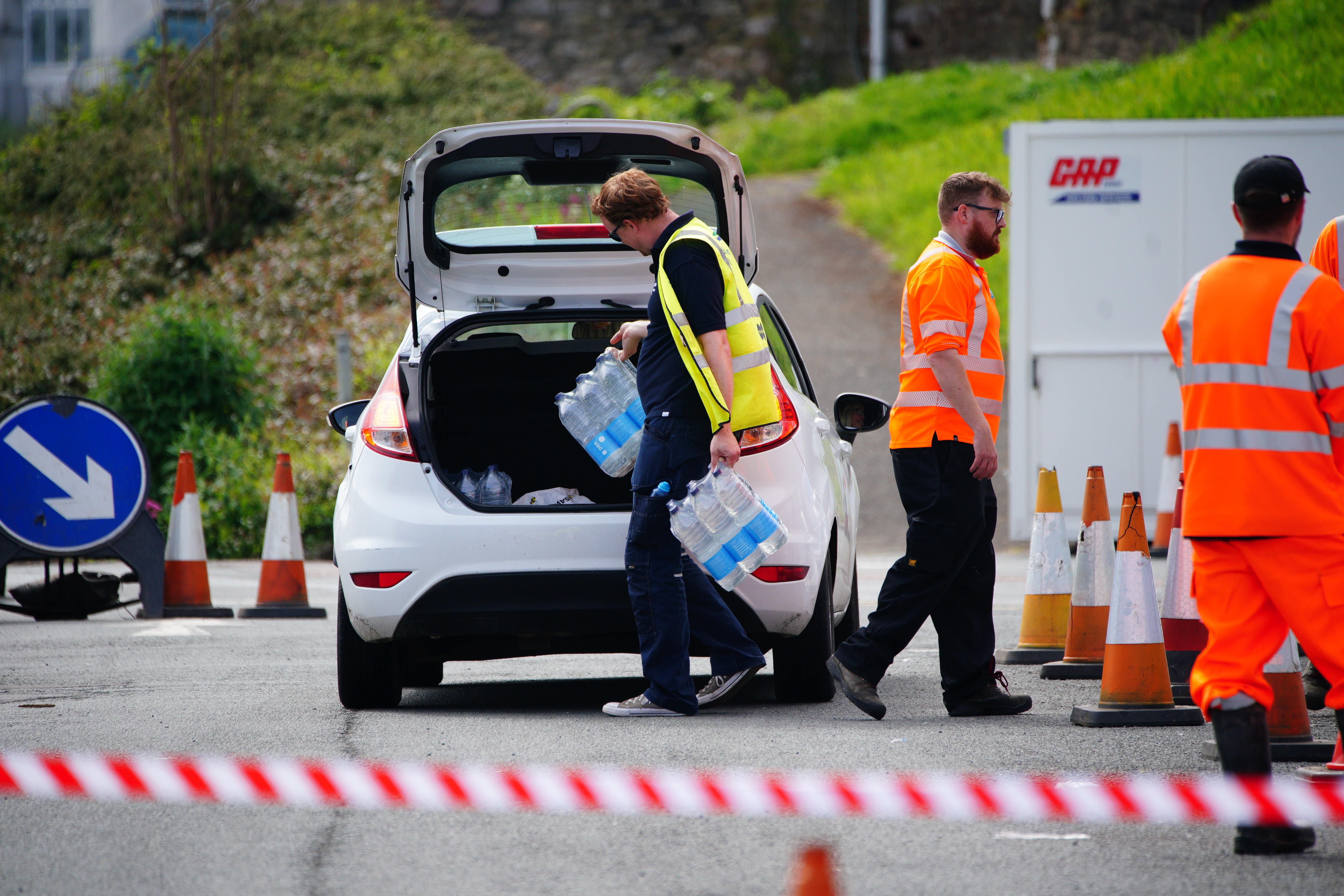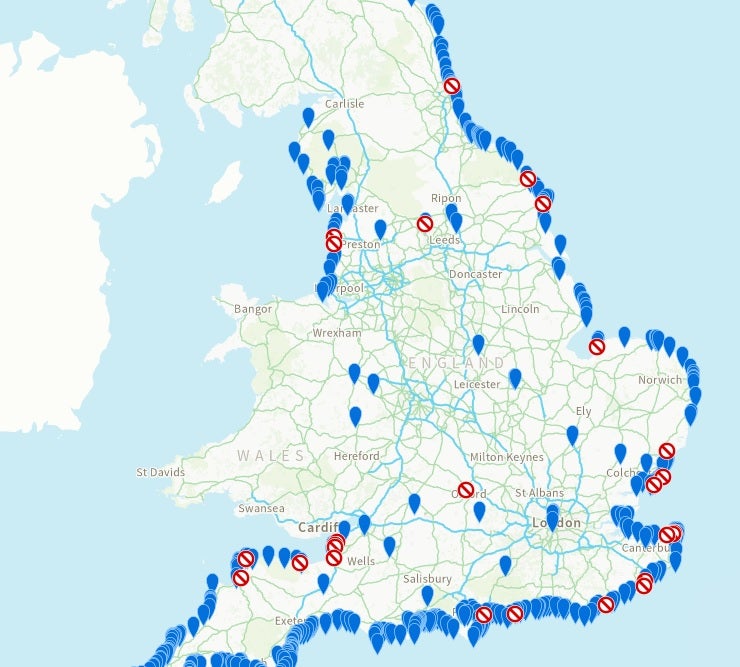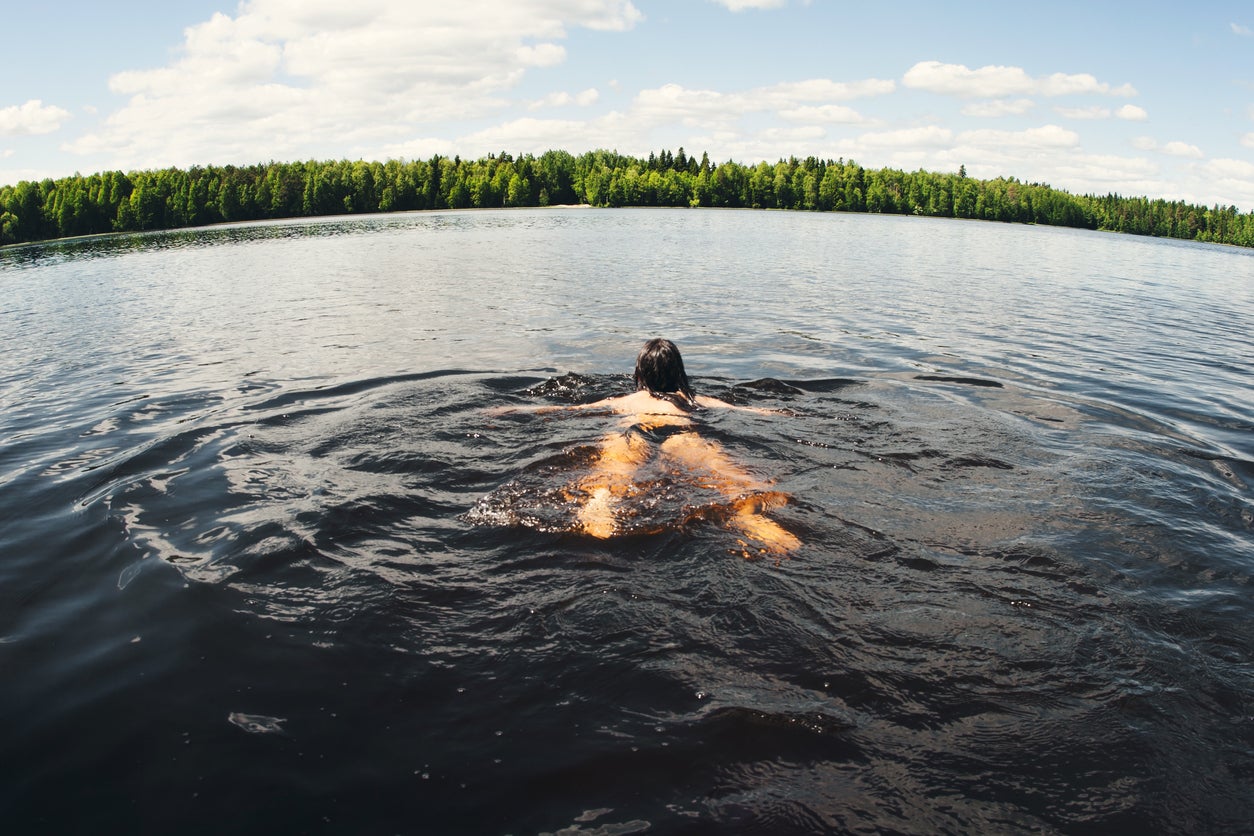Is it safe to swim in rivers, coastal waters and lakes this summer?
Country’s water quality under the microscope again after outbreak of illness caused by parasite in Devon
The outbreak of an illness caused by a parasite in Devon has put water quality under the microscope once again.
Some 46 cases of cryptosporidium have so far been confirmed in Brixham with dozens more reporting symptoms of the illness, which can cause severe watery diarrhoea, vomiting, stomach cramps and fever.
Details of the outbreak followed a string of reports about how water companies have been pumping human waste into lakes, rivers and the sea, the latest of which came just last week when it emerged millions of litres of raw sewage were allowed to flow into Windermere, a Unesco World Heritage Centre.
Further data published by the Environment Agency (EA) in March showed that sewage discharged into rivers and coastal waters doubled to record levels last year.

There were 3.6 million hours of spills in 2023, compared with 1.8 million in the previous 12 months. Yorkshire Water and United Utilities in the North West were among the worst offenders.
So with summer - a time when people are more likely to take a dip - fast approaching, is it safe to swim in rivers and lakes across the country?
Dr Aidan J Taylor, lecturer in microbiology at the University of Reading, said all water courses contain an abundance of microbes, most of which are “perfectly safe to humans” and a natural part of our environment.
“However, there are microbes which can cause disease in humans, called pathogens, which come from a number of sources,” he told The Independent.
“Waterfowl, such as ducks, and unmanaged agricultural runoff provide an ongoing source of pathogens into water courses, so there is always some minimal risk to swimmers.”
At risk areas
Dr Taylor added that “significant risk” only comes when the sewage network is overloaded, normally by flooding, and raw sewage enters natural water courses before it can be treated.
Unrestricted by ropes, lanes and busy swimming pools, many people find open water swimming an invigorating experience that takes them closer to nature.
There are, however, some risks associated with taking a dip in a river, lake or sea rather than a swimming pool, the UK Health Security Agency (UKHSA) says.
According to the EA there are currently 26 areas of England where it is not safe to bathe, which monitors pollution levels at some 400 locations across the country.

Professor Mark Fielder, medical microbiologist at Kingston University, said the potential risk of infection can be increased by wild swimming.
“This commonly manifests as gastrointestinal infections giving rise to vomiting and diarrhoea and, in some cases, skin and ear infections or respiratory disease,” he said.
“Organisms such as norovirus, giardia (a parasite) and cryptosporidium generally cause only fairly mild symptoms but can still be quite uncomfortable.”
But some organisms may be more problematic, he added.
Other illnesses
Professor Fielder explained: “Faecal organisms such Escherichia coli (E.coli), Enterobacter species, faecal enterococci and other enteric pathogens might be a cause for concern.”
E.coli and enterococci were detected in the networks of several water companies in 2022, according to the Drinking Water Inspectorate. It has not yet published its full report for 2023.
Barbara Evans, professor of public health engineering at Leeds University, said anyone who wants to swim in a river should avoid swimming directly downstream from treatment plants, particularly during dry weather when river water levels may be low.
“There may also be more pollution in the water after rainfall from combined sewer overflows and also from cross connections between sewers and drainage,” she said.
“Using designated bathing sites does not automatically guarantee a lower risk. Users should read the signs that are set up at designated sites or look at information online to get the latest available information.”

Professor Evans was among a team of experts who contributed to the first report to assess how to mitigate public health risks of recreational use of open water contaminated by human faecal matter and waste.
Recommendations include engineering interventions to prioritise wastewater asset maintenance, with regulatory frameworks enforcing resilience
Led by the Royal Academy of Engineering, the report’s findings were based on risk-based assessments and consultations with more than 100 engineers, wastewater experts, the water industry, campaign organisations and policymakers.
The report noted the rise in recreational activities in coastal and inland open waters across the UK, leading to greater public exposure to pollutants.
Increased public awareness and data availability on water quality have spurred renewed scrutiny over UK water standards and necessitated a revaluation of the public acceptability of the risk.
The report acknowledged there was a lack of evidence to demonstrate a direct, causal link between specific wastewater discharges and specific health incidents, but emphasised the known public health risk from exposure to high concentrations of faecal organisms.
It focused on the role of wastewater infrastructure in introducing primarily human faecal organisms into open water through storm overflows and treated effluent discharge.
However, it does not look at agricultural run-off from livestock, wild animals, or septic tanks.
Join our commenting forum
Join thought-provoking conversations, follow other Independent readers and see their replies
Comments